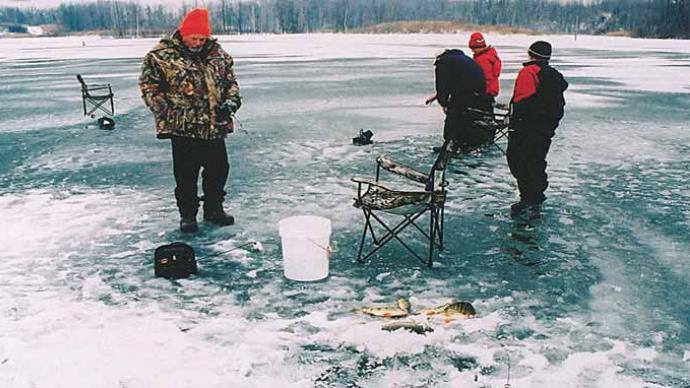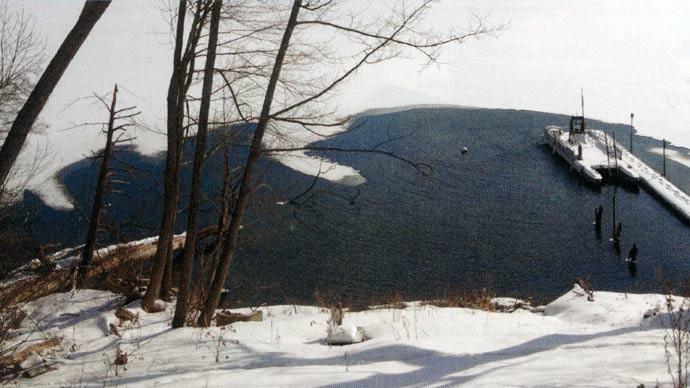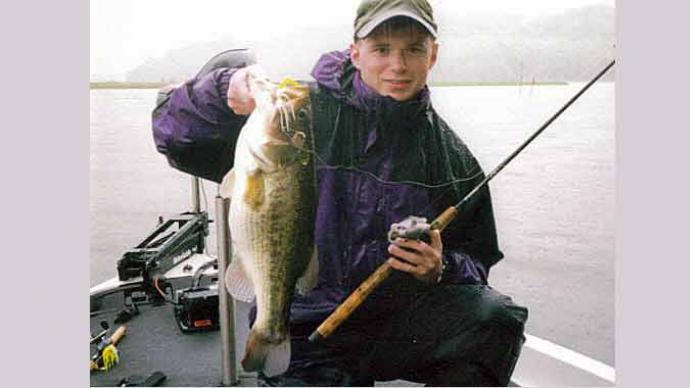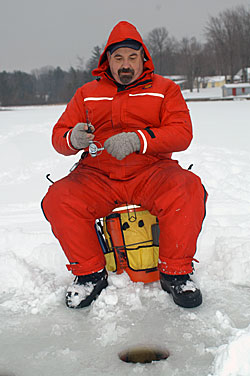
I always get a chuckle when I hear those southern boys on the bass fishing shows to talk about cold-weather bass fishing. They explain how you need to slow down your presentation when the water temperature dips into the 50s or even 40s, heaven forbid. You need to downsize your baits then, fish more deliberately and concentrate on the shallows where the sun is warming the frigid water.
We’ve got our form of cold-water bassin north of the Mason-Dixon line. Cold-water bass fishing to us northern anglers is when you can walk on water! Many bass experts will tell you that you can’t catch bass through the ice. They are just too sluggish and sedentary, lapsing into a state of semi-torpor when the water gets that cold. Nothing could be farther from the truth. Bass remain relatively active under the ice despite the cold temperatures. I’ve caught dozens of largemouths, and plenty of smallmouths, through the ice. It’s about as much fun as you can have on the ice when a largemouth inhales your tiny teardrop intended for bluegill, and you have to battle a good-sized bucketmouth on a wispy ice rod and one-pound test line! Granted, they aren’t going to fight as they do later in the summer when the water temps are in the ’70s, but even a foot-long bass will give a pretty good account of itself on ice tackle.
Many largemouth lakes are shallow bodies of water, so its finned residents can't retreat to deeper, warmer water. When that's the case, you'll find largemouth bass right where you'd expect to find them in the summer, patrolling weed edges, schooled near the first prominent drop-off, or relating to other structures. Bass will remain reasonably active unless oxygen levels drop precipitously low due to snow cover on the ice or decaying vegetation. Locating still-green, healthy weeds is key to catching bass through the ice. Usually, largemouth bass won't be far away.

My home lake is an excellent winter bluegill lake, and first ice finds angler catching limits of slab 'gills in 7 or 8 feet of water. What surprises many is the number of bass they'll catch along with the bluegills. I've often seen a mark on my flasher, watched the screen go from green to orange to red, and had my spring bobber slowly bend down. The hook-set is met with an immovable object that at first makes you think you've hooked the bottom. Soon, the bass realizes that the tiny morsel he just inhaled isn't food, and the battle is on. If you're lucky enough to land the bass, it will invariably be hooked in the upper lip.
Largemouth bass seems to like the same teardrop and spike or wax worm combinations that catch bluegills. I haven't noticed any color preference, but glow-in-dark colors, chartreuse, and orange seem to be good colors for the bass I've caught fishing hard water. Slightly large ice jigs, like the Genz Worm, make it easier to hook big-lipped bass.
While most of the largemouth bass I've caught through the ice has been incidental to fishing for panfish, I know anglers who regularly catch some giant bucketmouths while tip-up fishing for pike. It seems bass under the ice are more inclined to eat a golden shiner than a sucker minnow, but that may be because the shiners tend to swim higher in the water column while the sucker bores for the bottom. Either way, a largemouth is just as receptive to eating a fat golden shiner under the ice as eating the same shiner on Lake Okeechobee in open water.
I've caught far fewer smallmouth bass through the ice than largemouth bass, but I have friends who catch them regularly while fishing for walleyes. Smallies tend to be tightly schooled while relating to deep structure in the winter. It would seem that's where you're likely to find winter walleyes, but friends Paul Ko and Shane DuBois of Born To Fish Media claim that winter smallies and walleyes won't mingle.
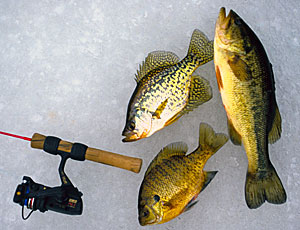
"Usually, when we catch smallmouths through the ice, we'll find them on top of the structure in deep water," Ko said. "Most times, you'll find the walleyes shallower, off the sides of the structure on the flats or relating to an old road bed."
Winter smallmouths are still fairly aggressive and can be caught using aggressive presentations. "A lot of the smallmouths we catch though the ice are caught on lipless crankbaits, like Dynamic Lure's HD Ice," Ko said. "You'll be ripping the lure and see a mark come on the screen. They'll usually come up and smack if you kind of dance the lure upward."
Smallies are not above hitting ice-fishing spoons either. Many a walleye angler has been surprised when the fish that slammed his minnow-tipped c Pimple or PK Flutter Fish is a different bronze color than they expected.
It's not likely that they will schedule a B.A.S.S. tournament on a Minnesota or Michigan lake in February any time soon, but ice anglers prove all the time that cold water bassin' is all relative.


